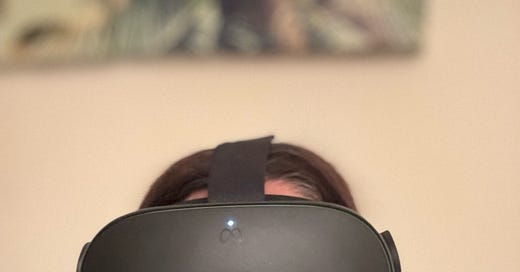Leaving the Room Without Leaving the Room
How VR Became My Sensory Sanctuary as an Autistic Adult
Ever need to leave the room without actually going anywhere?
That’s what VR gave me.
A door that closes gently. A pause button on the chaos. A space that bends to fit me instead of the other way around.
Behind the headset, the fluorescent hum of real life fades.
There are no flickering overhead lights. No buzzing appliances. No unpredictable noises ricocheting off drywall.
Just… quiet. And control.
As an autistic person with sensory sensitivities, I’ve spent a lifetime absorbing too much, too loud, too bright, too fast.
But when I step into VR, the volume lowers. My nervous system exhales. I set the pace. I shape the space. I decide who to meet, and when to log off. And that’s everything.
For me, virtual reality isn’t about escaping reality. It’s about making it bearable.
Sometimes I play solo games that let me explore vast alien worlds at my own rhythm. Other times, I join virtual rooms or board game lounges: no travel, no pressure, no masking.
In those moments, I’m not hiding. I’m reclaiming my energy. My autonomy. My joy.
VR isn’t just entertainment. It’s become part of my self-care. My sensory strategy. My community connection point.
This is bigger than gaming.
This is accessibility. This is mental health. This is me, fully present, without shutting down.
That’s revolutionary.
If you’ve never needed to leave the room without leaving the room… maybe this sounds like science fiction.
But if you have—if you’ve ever felt the walls close in, if your brain short-circuits under too many inputs, if you’ve longed for a reset button—you know.
You know what this means.
VR didn’t change who I am. It just made space for me to be.




